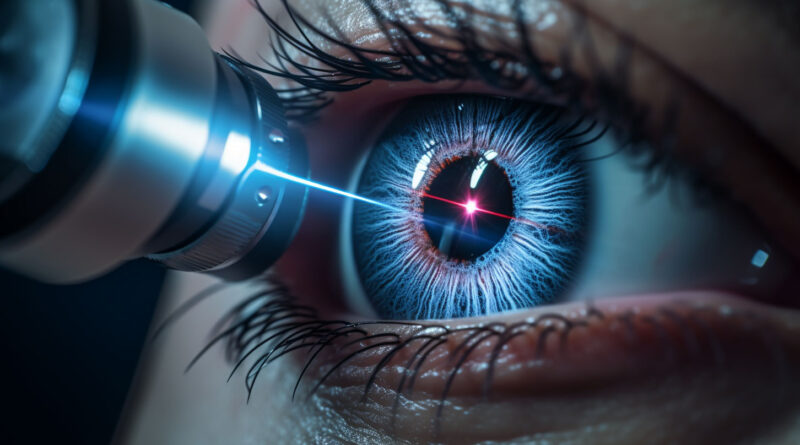Cataracts at 50? Why Vision Loss Isn’t Just a Senior Problem
When we think of cataracts, most of us picture someone in their 70s or 80s, slowly losing vision with age. But what if I told you cataracts can start earlier than you think—sometimes as early as your 40s or 50s?
If you’ve noticed that the world around you seems dimmer, reading takes more effort, or headlights at night look like blinding halos, it’s time to pause and listen to your eyes. As a compassionate eye doctor, I’ve met many patients who never expected to face cataract removal in their 50s. But the truth is—it’s more common than people realize.
Let’s talk about why this happens, what the journey looks like, and why there’s so much hope on the other side.
What Are Cataracts—And Why So Soon?
A cataract is when the natural lens of your eye becomes cloudy, making it harder to see clearly. Over time, this cloudiness builds up and starts affecting your day-to-day life—whether it’s reading, driving, or recognizing faces.
Yes, age is a factor. But so is:
- Genetics (If your parents had cataracts early, you might too)
- Health conditions like diabetes
- Smoking, medication use, or UV exposure
- Eye injuries or surgeries
So if you’re 50 and already noticing changes, you’re not alone—and you’re not imagining things.
Cataract Surgery: A Life-Changing 30 Minutes
The good news? Cataract surgery is one of the safest, most effective procedures in modern medicine. It’s fast—usually around 20 to 30 minutes—and the results are often nothing short of life-changing.
Let’s walk through what happens during the recovery process so you can feel more informed and at ease.
Week 1: The First Few Days
What You Might Feel
Right after cataract removal, it’s common to feel:
- A little itchy or gritty in the eye
- Mild tearing
- Sensitivity to light
- Blurry vision that improves gradually
These aren’t problems—they’re signs your eye is healing.
Follow-Up Is Key
You’ll likely have a follow-up appointment within 24–48 hours. Your doctor will check your healing progress and ensure everything’s on track.
Don’t Forget the Drops
You’ll be given medicated eye drops to prevent infection and control inflammation. Use them exactly as prescribed. Think of them as vitamins for your healing eye.

Take It Easy
This is not the week to mow the lawn or rearrange your furniture. Rest, relax, and let your body do the work. No rubbing your eyes, and sleep with the protective shield your doctor provides.
Week 2: Adjusting to Clearer Vision
This is the stage when you’ll likely start to notice a difference. Some describe it as “lifting a fog” or seeing the world in HD.
You might find:
- Reading is easier
- TV feels brighter
- Outdoor colors look more vivid
What You Can Do
By this point, most people can return to:
- Light walking
- Reading
- Watching TV
- Cooking and basic household tasks
Just avoid anything strenuous or risky to the eye.
The Emotional Shift
It’s common to feel surprised, even emotional, during this time. After living with cloudy vision, seeing clearly again can spark joy and even tears. Embrace it. You’re not alone.
Week 3: Gaining Confidence
With every passing day, your eye continues to heal—and so does your confidence.
What Improves
- Visual clarity becomes sharper
- Night glare and halos begin to fade
- Driving might be cleared by your doctor
You may also feel more comfortable going out, socializing, or returning to hobbies like painting, reading outdoors, or playing cards with friends.
Minor Annoyances? Still Normal
Some people still experience dry eye or brief bursts of blurriness. This usually passes and is part of the normal healing timeline.
Week 4: Seeing the World Differently
At this stage, many people say it’s like the world has been “repainted.” Colors are brighter, details sharper, and everything just feels… clearer.
Is My Vision Final?
Not quite. Your vision may continue to improve in small ways for several more weeks. At your final post-op visit, your eye doctor may check to see if you still need glasses—or if your vision is good enough without them.
Your Eyes, Your Future
Cataract surgery isn’t just about better vision—it’s about getting your life back. Being able to drive safely, enjoy your grandchildren’s smiles, or read a favorite book without strain—it’s freedom.
FAQs: Your Common Concerns Answered
“Can I rub my eyes?”
It’s best not to. Even weeks after surgery, rubbing can irritate or interfere with healing. Try a cool compress instead if your eye feels itchy—but check with your doctor first.
“Will my vision keep improving?”
Yes! Many patients notice improvements well into the 6th or even 8th week. Healing varies, so be patient with your eyes.
“What if one eye feels different than the other?”
If you’ve only had one eye operated on, this is totally normal. Your brain is adjusting. Once both eyes are treated (if needed), balance returns. If both eyes were done, slight differences are still part of the natural healing process.
Conclusion: It’s Not “Too Early”—It’s the Right Time
If you’re in your 50s and struggling with vision changes, don’t brush it off as something to “deal with later.” Cataracts don’t wait for retirement age. But thankfully, you don’t have to wait for them to worsen either.
Cataract removal in your 50s isn’t just appropriate—it’s smart. It’s about protecting your independence, safety, and quality of life. The earlier it’s addressed, the sooner you can return to the things you love with clarity and confidence.
Talk to your eye doctor. Ask questions. Share your concerns. And remember—you’re not aging early. You’re just taking charge of your vision sooner.
From blurry days to bright mornings—your journey is just beginning.

